- Joined
- 13 February 2006
- Posts
- 5,410
- Reactions
- 12,611
| The stock market no longer appears to be President Trump's go-toyardstick for success. Bond yields, not the Dow, are the administration's new North Star. Why it matters: The administration now sees bond yields — which determine long-term interest rates across the economy — as a real-time gauge of investors' confidence in its fiscal agenda.
|
| Wednesday is the big day. The news comes out right around 4:20. This is a very big deal. In case you're not keeping up with the index weightings, here's the cheat sheet:
I would be the first to tell you if it wasn't. But I think Wednesday's earnings release is going to be that much more impactful this time around because of the current state of the market. Look at the Semiconductors Index relative to the S&P500 potentially completing a massive top. If we lose Semi's, then bull market cancelled. It's that simple: |
The big question is: Will this report spark a fresh rally or signal the end of the easy gains in AI? |
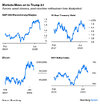
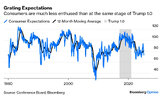
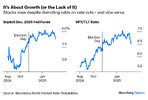
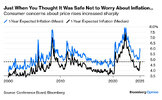
| Efforts by the Trump administration and Elon Musk's Department of Government Efficiency to cut vast numbers of federal jobs will surely show up in national economic data — but don't expect the impact to be massive, or immediate. Why it matters: In a $30 trillion economy with 159 million jobs, it takes a lot to meaningfully move the dial. The types of cuts to federal employment and government contracts that have been enacted thus far by the DOGE crew are comparatively small scale.
Of note: February jobs data due out Friday is unlikely to show much impact. The "reference week" for that payrolls report is the week that included Feb. 12, when the cutbacks were just getting started. If you squint, you can start to see evidence of cutbacks in the weekly initial jobless claims data.
|
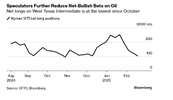
 The big picture: Trump and Musk are correct that America is drowning in deficits. Some of it flows from silly spending on stale or even stupid programs. Those make for terrific X dunking: Agencies with more software licenses than employees! A $324,671 USDA grant for "Increasing DEIA Programming for Integrated Pest Management"! A $3 million Education Department contract "to write a report that showed that prior reports were not utilized by schools"!
The big picture: Trump and Musk are correct that America is drowning in deficits. Some of it flows from silly spending on stale or even stupid programs. Those make for terrific X dunking: Agencies with more software licenses than employees! A $324,671 USDA grant for "Increasing DEIA Programming for Integrated Pest Management"! A $3 million Education Department contract "to write a report that showed that prior reports were not utilized by schools"! State of play: The idea of DOGE is popular. A poll released yesterday by Harvard's Center for American Political Studies and The Harris Poll found 72% of U.S. registered voters polled online support the existence of a federal agency focused on efficiency.
State of play: The idea of DOGE is popular. A poll released yesterday by Harvard's Center for American Political Studies and The Harris Poll found 72% of U.S. registered voters polled online support the existence of a federal agency focused on efficiency. Reality check: Of the roughly $7 trillion the U.S. spent in 2024 (as calculated by Axios chief economic correspondent Neil Irwin)...
Reality check: Of the roughly $7 trillion the U.S. spent in 2024 (as calculated by Axios chief economic correspondent Neil Irwin)...
|
|
|
|
| We've never seen anything like this. The S&P500 hit new all-time highs just last week. The All Country World Index is set to close the month at the highest levels of all time. But this week we just saw the 7th highest bearish reading among individual investors EVER. Yes that's right. Ever. The numbers just came in, and over 60% of individuals are bearish over the next 6 months. Less than 20% of them are bullish. How is that even possible? What are they all so scared about? |
I understands this sort of thing happens. Investors get bearish. That makes sense. But with the S&P500 just 2.4% from a new all-time high? And more and more countries around the world joining the bull market? Yes. Despite all of that, we just had the 7th highest reading among bears ever. |
It's wild. To me, this is just more of a reason to be spending our time looking for stocks to buy, not looking for stocks to sell. Yesterday, meanwhile, was the most important earnings release of the season. I would be the first one to tell you that it wasn't. Here's the quick cheat sheet as to why $NVDA matters so much:
NVIDIA just dropped its Q4 earnings last night, and the market didn’t waste any time making its move. Was it just a nothing burger or are we setting up a much bigger move? |
|
 Breaking: Gene Hackman, 95 — the prolific Oscar-winning actor whose studied portraits ranged from reluctant heroes to conniving villains, and made him one of the industry's most respected and honored performers — was found dead along with his wife, Betsy Arakawa, and their dog at their home in Santa Fe, N.M. His life story.
Breaking: Gene Hackman, 95 — the prolific Oscar-winning actor whose studied portraits ranged from reluctant heroes to conniving villains, and made him one of the industry's most respected and honored performers — was found dead along with his wife, Betsy Arakawa, and their dog at their home in Santa Fe, N.M. His life story.
 Zoom in: If Republicans fail to move a bill, taxes on American families will rise back to their 2017 levels next year — something every elected Republican views as unacceptable.
Zoom in: If Republicans fail to move a bill, taxes on American families will rise back to their 2017 levels next year — something every elected Republican views as unacceptable.
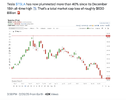
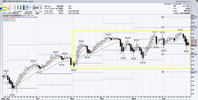
Hello and welcome to Aussie Stock Forums!
To gain full access you must register. Registration is free and takes only a few seconds to complete.
Already a member? Log in here.